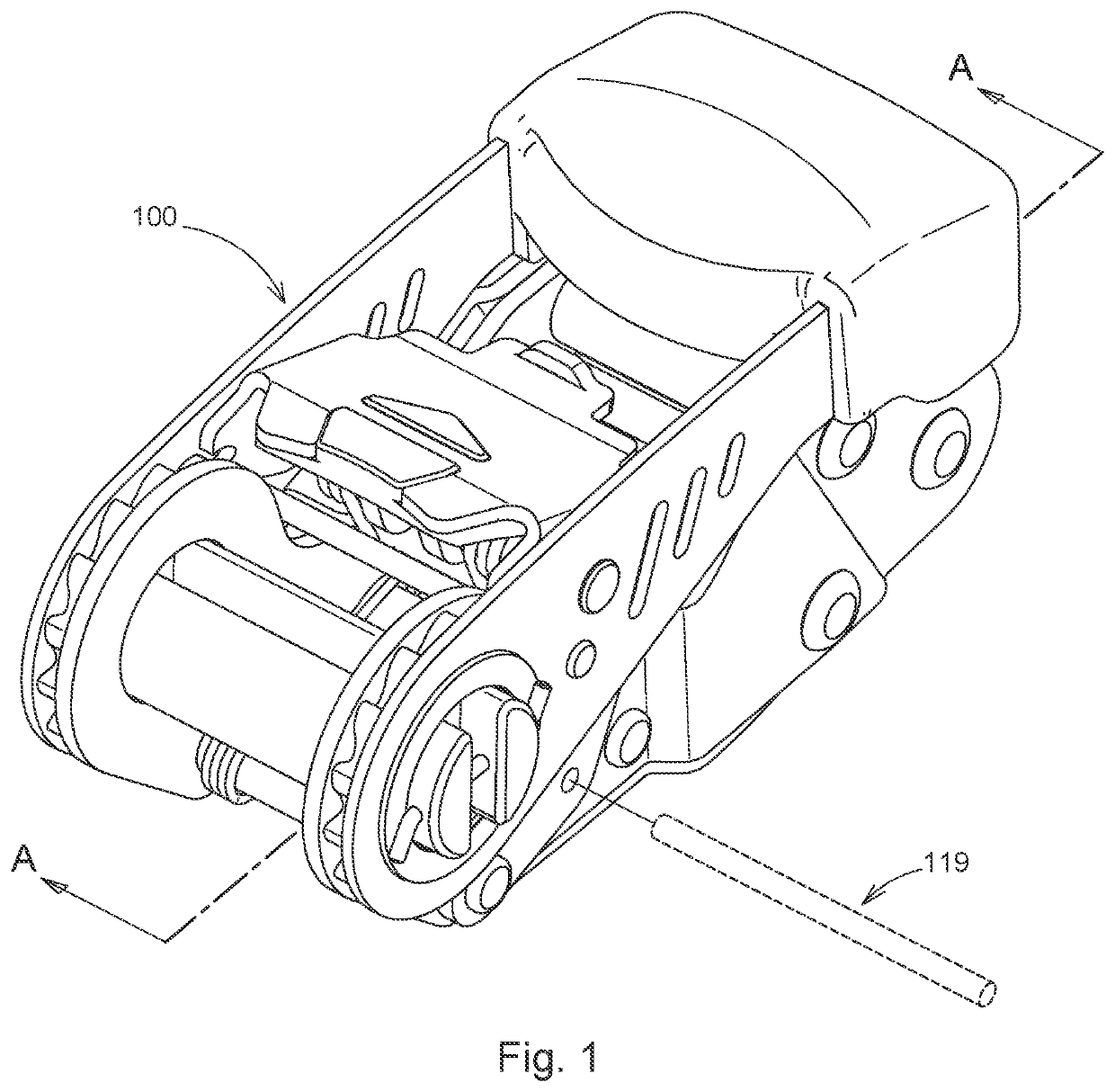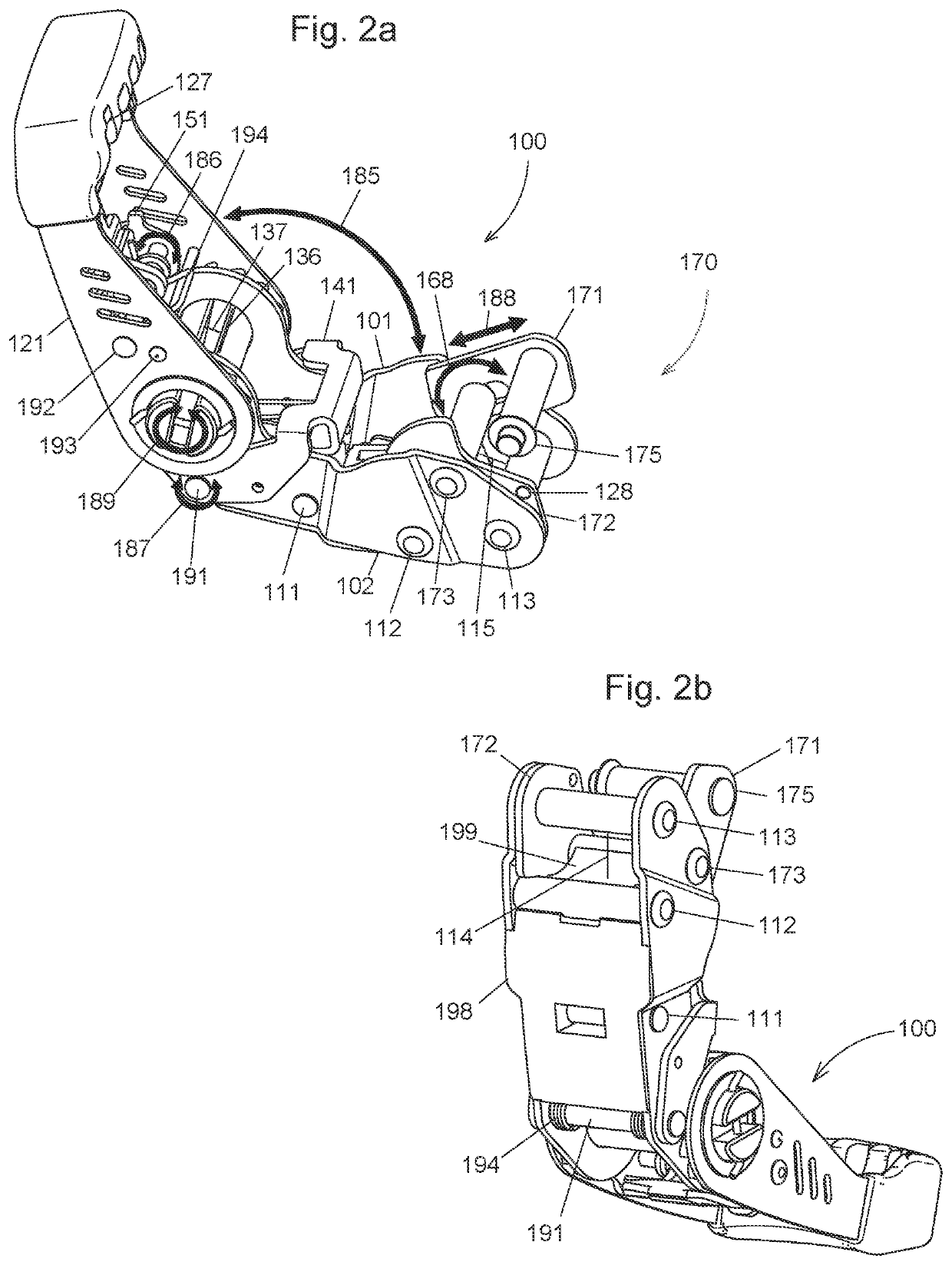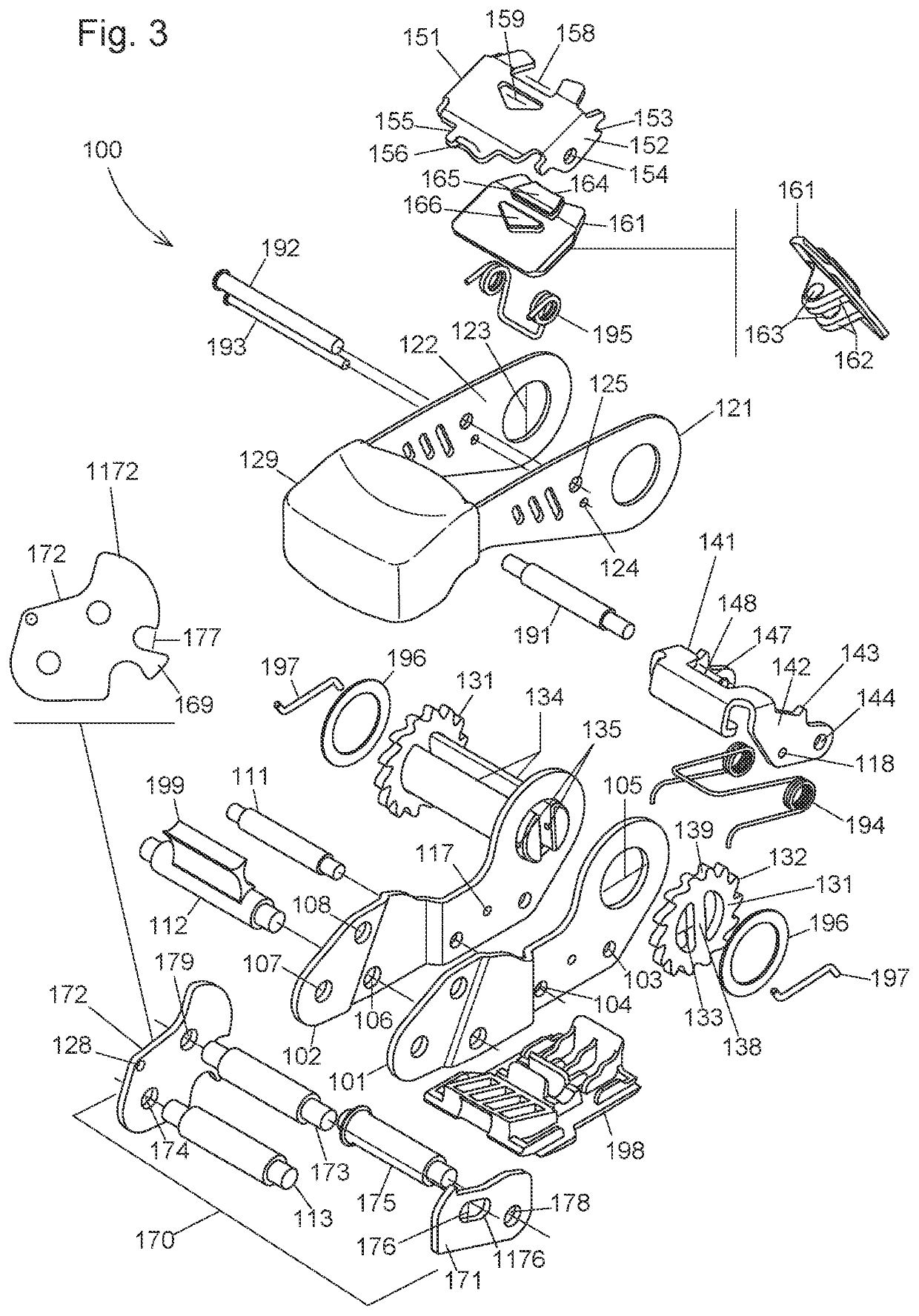Systems and methods for an improved ratcheting device including pivoting tooth
- Summary
- Abstract
- Description
- Claims
- Application Information
AI Technical Summary
Benefits of technology
Problems solved by technology
Method used
Image
Examples
first embodiment
[0241]FIG. 23a through FIG. 23h show a sequence of isometric views depicting a step-wise progression for securing Enhanced Ratchet 100 to a short strap containing a sewn end-loop secured to an anchor location, and subsequently forming a fixed-end configuration between two anchor locations using a second length of webbing containing a permanently affixed hook. The short strap can be sized to an appropriate length best suited to the application. Enhanced Ratchet 100 can be attached to the short strap at any location along the strap. Note, the use of a removably attached strap enables the strap and first embodiment combination to be secured to a variety of anchor locations that otherwise could prove unsuitable for a sewn-on strap containing a sewn-on hook. This type of connection is referred to as a tethered anchor.
[0242]FIG. 24a through FIG. 24h show the same sequence from FIG. 23 with the short strap being removably secured to a hook. The configuration shown replicates the configurat...
embodiment 100
[0244]FIG. 26a through FIG. 26h show a sequence of isometric views depicting a step-wise progression for securing Enhanced Ratchet 100 to a length of webbing containing a sewn end-loop and two removably affixed S-hooks, subsequently anchored between two fixed positions forming a fixed-end configuration. The sequence shown is similar to the sequence depicted in FIG. 24, the difference being, instead of two straps, a single strap is used. The induced stress in the ratchet portion of the embodiment 100 is comparable to that of a current art device, yet the magnitude of the reaction force at the anchor locations is effectively doubled (FIG. 17d, FIG. 35d Prior Art). This represents a significant advantage over the current art.
[0245]FIG. 27a through FIG. 27e show a sequence of isometric views depicting a step-wise progression for securing Enhanced Ratchet 100 to a strap containing a sewn end-loop. Before the strap is secured to Enhanced Ratchet, the end containing a sewn end-loop is rout...
embodiment 380
[0329]The embodiment 380 as shown in FIG. 33 and FIG. 34 incorporates the capture-frame assembly 170 into a cam-lock style webbing tensioning device. While not specifically a ratchet device, the embodiment is a tensioning device and shows how a typical cam-lock device could be improved by means of the capture-frame assembly.
[0330]In some embodiments of the capture frame assembly 170, the device may be used in an alternative configuration not with a ratchet, or with a more traditional ratchet. The capture frame assembly 170 is usable in a variety of contexts.
[0331]Although embodiments of the Enhanced Ratchet are in many contexts deployed in the context of webbing flat straps, the principles and designing of the ratcheting lever arms and rotating brackets may deployed in a variety of contexts not including flat straps. Additionally, in some contexts, the rotational mating of the brackets in order to release tension on the flat straps need not be enabled and a user may be required to p...
PUM
 Login to View More
Login to View More Abstract
Description
Claims
Application Information
 Login to View More
Login to View More - R&D
- Intellectual Property
- Life Sciences
- Materials
- Tech Scout
- Unparalleled Data Quality
- Higher Quality Content
- 60% Fewer Hallucinations
Browse by: Latest US Patents, China's latest patents, Technical Efficacy Thesaurus, Application Domain, Technology Topic, Popular Technical Reports.
© 2025 PatSnap. All rights reserved.Legal|Privacy policy|Modern Slavery Act Transparency Statement|Sitemap|About US| Contact US: help@patsnap.com



